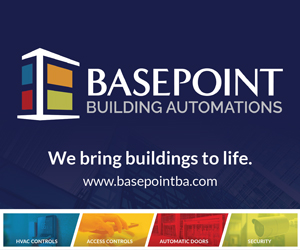5 takeaways from the 2025 Manufacturing Forecast

The Business Record recently hosted its annual Manufacturing Forecast event, which was focused this year on economic uncertainty and tariffs.
Manufacturing is an important sector of the state’s economy, making up 17% of Iowa’s GDP at $35 billion annually. Uncertainty due to changes in federal rules and trade deals have left many concerned about the financial health of manufacturing businesses and related companies.
Panelists included:
- Nicole Crain, president, Iowa Association of Business and Industry
- Ernie Goss, director of the Institute for Economic Inquiry and Jack A. MacAllister chair in regional economics at Creighton University
- Matt Koch, chief marketing officer, Sukup Manufacturing Co.
- Peter Orazem, interim chair, Iowa State University Department of Economic
The panelists discussed how Iowa’s manufacturing sector is taking on many challenges, including higher interest rates, a lagging ag economy, supply chain disruptions and ongoing labor issues, including immigration and deportation.
Here are five takeaways from the event.
1. Tariff policy is creating major uncertainty: Tariffs are shifting frequently and being used for political purposes rather than strictly economic ones, which panelists said is harmful to trade relationships, especially with key partners like Canada and Mexico. Business leaders want trade policy stability to make long-term decisions. “If there’s a purpose to tariffs, you want to have them narrowly tailored to the purpose of business, and not for political ends,” Orazem said. “Using them for political ends actually just adds more uncertainty. Who knows what will be the rationale for a change in tariff policy tomorrow?”
2.Manufacturers face rising costs and supply chain impacts: Steel prices and other input costs are up 12-15% due to tariffs, even when sourcing domestically. These disruptions are limiting companies’ ability to plan and invest confidently.
“We can’t just change the game. I think that we were all depending on each other,” Koch said. “We have such an interdependent economy. The moment we start changing the game, then all of a sudden, supply chain is massively disrupted.”
3.Labor shortages continue to hinder Iowa manufacturing: Workforce availability remains a top concern due to low immigration, deportations and flat employment growth. Companies like Sukup are expanding hiring outside of Iowa due to local shortages. Crain said ABI members are looking for skilled workers to hire.
“What I’m still seeing and hearing as I’m talking with members is workforce and how do we upskill our current workforce? How do we recruit new talent to the workforce and to the manufacturing industry, and how do we talk to them about the great jobs and careers there are in manufacturing,” Crain said. “Even through the uncertainty that we are seeing, employers still need employees, whether that’s in rural or urban, large or small manufacturers. What our members are talking to me about is they need people that are qualified, that can get through their initial application process and that are ready to go to work.”
4.Mixed opinions among Iowa manufacturers on tariffs: Support for tariffs varies across industries and countries. Anecdotally, there seems to be more support for tariffs on China than on Canada/Mexico. Smaller manufacturers especially feel the need for fair trade and are hurt by volatility.
“We hear that 40% [of ABI members] don’t support the trade policy on Canada and Mexico, while 43% support the tariff and trade policy on China,” Crain said. “I also think it probably speaks to the different industries that we have within our membership, and how they are directly affected, and what they’re seeing and hearing in the work that they do.”
5.Short-term caution, long-term cautious optimism: The panelists said they generally expect the manufacturing sector to worsen or stay flat in the next six months, but sees long-term potential due to technology, AI, infrastructure investments, continued business innovation and vertical integration.
“I expect manufacturing to move sideways to a bit down, but that’s in the next six months,” Goss said. “Beyond that, I’m very positive about the U.S. economy, the regional economy, and why is that? Well, I think AI is very, very useful in terms of what we economists would call segmenting the market.”

Gigi Wood
Gigi Wood is a senior staff writer at Business Record. She covers economic development, government policy and law, agriculture, energy, and manufacturing.










